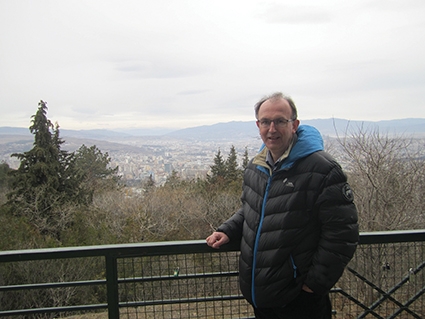Developing Agritourism in Mukhrani
Peter Mac Nulty was appointed Managing Director of Tourism Development International in January 2001. He has extensive experience in the field of tourism project management, strategic planning and marketing and has been responsible for the direction of over 200 major tourism projects, including tourism research programs, feasibility studies, capacity building, marketing and branding strategies and strategic tourism studies. He has worked on tourism and leisure projects in the United States, Europe, Asia, Africa and the Gulf Region.
Tourism Development International (TDI) was founded in Ireland in 1988. The company has consistently endeavored to provide consultancy and research advice which is pragmatic and sustainable for the tourism and leisure industries worldwide, doing so through its team of experts and with the support of specialist consultants grounded in the industry.
GEORGIA TODAY sat down with Peter to talk about their project in Mukhrani.
Tell us about Tourism Development International and its history with Georgia
Through a range of services, which includes strategic tourism master planning, feasibility studies, capacity building and training, business plans and economic studies, market research, and marketing, we have reached many sectors in many countries. Our work has taken us throughout Ireland and beyond to Europe, Asia, the USA, the Middle East, and Africa in an industry which is now amongst the largest in the world.
TDI is familiar with Georgia and its tourism sector. The company recently completed a significant consultancy assignment on behalf of World Bank/ Municipal Development Fund of Georgia (MDF). The project, Tourism and Project Performance Monitoring and Evaluation Activities in the Kakheti Region, was conducted over an 18-month timeframe from January 2016 with the objective of monitoring the impact of the Regional Development Project (RDP) in the Kakheti region. In 2016, TDI prepared the Mukhrani Village Tourism Development Plan on behalf of the Foundation for Economic Development of Mukhrani. This project gave TDI an insight into the key issues and challenges facing the Mukhrani community, along with the opportunities for tourism development.
Tell us more about the Mukhrani project
The objective of the Project is to build the capacity of local businesses, residents and other stakeholders, with a particular emphasis on women and youth, to improve backward linkages between tourism and primary agriculture in Mukhrani village.
The training program is implemented by us on behalf of EBRD and managed by a team of six, which comprises international and Georgian experts, led by myself.
Why Mukhrani?
Mukhrani village has significant untapped potential for tourism development. The village has a range of significant historic assets including Mukhrani Citadel, Niko the Boer’s Castle, internationally significant Roman ruins at Dzalisi, and Chateau Mukhrani. In addition, Mukhrani has intangible heritage such as the production of traditional foods which could also have an appeal for international visitors. In 2016, the Foundation for the Economic Development of Mukhrani commissioned us to prepare a Tourism Development Plan for Mukhrani. The plan set out proposals for the long-term conservation of Mukhrani’s built heritage and the sustainable development of tourism, including agritourism. The Tourism Development Plan highlighted the need for tourism investment and training measures.
What we saw is that the village has a number of strengths, namely it being a center of food production/agrarian economy and having a natural environment. The community there is friendly and hospitable and actively seeks to support tourism while being able to show off its local traditions and culture e.g. wrestling.
There is a wealth of opportunities open to Mukhrani. There’s a growing market of active, wealthy, independent travelers looking for alternative holiday experiences, and Mukhrani is ideally placed for such purpose- within close proximity of Mukhrani is Mtskheta, an existing tourism hub and UNESCO World Heritage Site. The village is also located on the national wine tourism route. The community could really capitalize on Mukhrani’s historic role as a regional center of food production and trade and should consider developing festivals and events based around food and heritage.
Does Mukhrani have any weaknesses or face any threats?
Mukhrani’s weaknesses include a lack of awareness of its potential as a tourist destination, seen by the absence of ‘market ready’ attractions, very limited accommodation/restaurant base, limited visitor facilities i.e. toilets, information/orientation for visitors, lack of tourism knowledge, skills and training and current unsafe food hygiene practices.
The threats to Mukhrani are an overall lack of outside awareness of Mukhrani, the cost of conservation of built heritage, and a lack of capacity to respond to market opportunities e.g. accommodation, visitor facilities.
What effect will the success or failure of Mukhrani have on future projects? Do you have anything else planned, or in the works in Georgia at the moment?
Mukhrani has been selected as a Pilot Area for the project as it is well suited for agritourism. Success in tourism will depend on a range of factors including level of investment in infrastructure, tourism product development and the establishment of new tourism enterprises. This capacity building program is aimed at facilitating the further development of agritourism enterprises in Mukhrani.
Máté Földi











